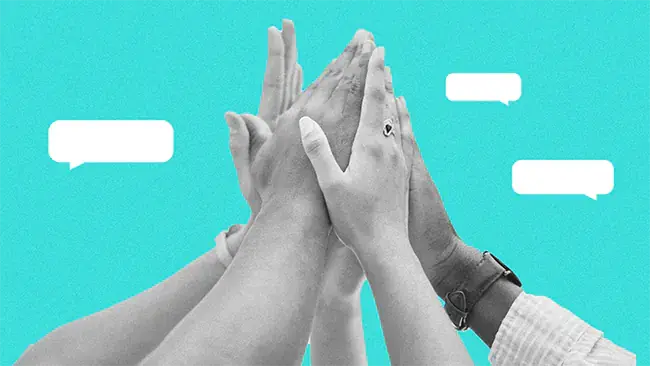How AI will impact workplace communication

Generative AI’s market size is expected to skyrocket to $110 billion by 2030 — up from $7.9 billion in 2021, according to Acumen Research.
-
Why it matters: Now is the moment for organizations to think strategically about how they can use AI to its full effect — in planning, in communication, and in innovative execution.
The big picture: Generative AI can radically reimagine how your organization creates internal communications for employees, customers, and stakeholders. It won’t replace the long-term planning, critical thinking, and delicate mission, vision, and roadmap creation that your team’s best minds do — but it can take over some of their low-lift tasks so they can spend more time on that higher-order execution.
Consider how AI will:
-
Make writing easier for non-communicators. People who struggle to simplify and synthesize their ideas can use generative AI technology to craft clearer, more impactful summaries of their work.
-
Shorten production time. More confident communicators can scale their efforts, using generative AI to get first drafts or final summaries on the page to build on or edit, rather than start from scratch.
-
Increase output. Consider if shorter production windows or a bigger pool of empowered collaborators means you have more time and bandwidth to prioritize projects, documentation, company newsletters, ads, and other communications, you ordinarily couldn’t get to.
-
Lower training costs. Another tool in your team’s kit, generative AI technology can become an accessible equalizer — establishing and elevating the baseline for how your organization communicates. Once that bar is raised, leaders can focus on fewer, but higher impact L&D efforts for those who need to level up how they navigate and communicate across the organization.
These factors are the start — but not the sum — of what makes generative AI a powerful player in any form of communication, from changing how quickly messages can reach your customers, to how swiftly communications can be refined in times of crisis, to how your team can produce content day-to-day.
However, like any advancement, there are also factors to consider when weaving in these new advances to your communication strategy.
- It’s still evolving. Don’t expect perfection right out of the gate. The technology is still developing and learning through trial and error.
- You need to edit. As news stories have shown, AI is still prone to failure, like any technology. Use it as a force multiplier, but understand you still need someone to review the content it produces to ensure it comes across with the accuracy, tone, and intention you expect.
- Use it ethically. Generative AI needs to be trained using existing images, data, and patterns to achieve its end goals. Make sure you use technology that uses imagery and content with creators’ consent. Be transparent about where and how you are using AI with your colleagues. New technology means new responsibility, and ignoring that second step could tarnish trust and reputation.
- Be ready for more security considerations. It will be easier than ever for bad actors outside your organization to create false content — like fake images, earning reports, or other crucial documentation. Start planning with your legal and IT teams for how you may need to evolve privacy and security practices.
The bottom line: With generative AI’s ability to create emails, images, articles, ads, and so much more, organizations are eager and scrambling to figure out how they can — and should — adopt it. Preparing now can go a long way in preventing setbacks, improving your content, and impacting your bottom line.
Go deeper: Join us for an event highlighting the power of adding AI to your internal communications.





.webp)












.webp)

















